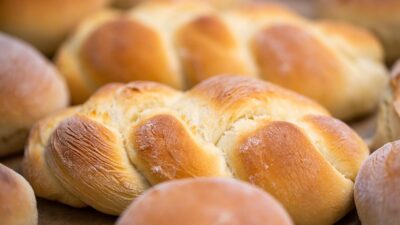In the age of Instagram reels and TikTok videos, food vlogging has emerged as a novel and engaging way to share culinary delights. Not merely a way to present recipes or showcase cooking skills, food vlogging is an art that combines the aesthetics of food presentation with the technical aspects of videography. This article will delve into the nuances of food vlogging, exploring its creative potential and the elements that make it impactful.
The Rise of Food Vlogging
Food vlogging is more than just a passing trend; it represents a cultural shift where people seek authenticity and connection through food. The rise of social media platforms has enabled food enthusiasts to share their culinary journeys with a global audience. For many, it starts in the kitchen, where experimentation and creativity thrive.
With platforms like YouTube, Instagram, and TikTok, aspiring food vloggers can easily showcase their passion for cooking and share their experiences. The community aspect is crucial; viewers aren’t just passive consumers. They engage, comment, and share, creating a two-way dialogue around food.
Essentials of Food Vlogging
1. Content Planning
Before hitting the record button, it’s essential to plan your content. Decide on the type of cuisine, recipe, or food experience you want to share. This planning phase includes scripting your points or preparing notes to ensure a smooth flow during recording. Authenticity resonates well with viewers, so incorporating personal stories or cultural backgrounds can enhance relatability.
2. Visual Aesthetics
Food is all about visual appeal, and this is especially true in vlogging. Lighting plays a crucial role; natural light works wonders to enhance the vibrancy of colors. It’s advisable to film during the day and use diffusers or reflectors for a softer glow. Composition is another key aspect. Use enticing angles—close-ups, overhead shots, and medium shots—to showcase the food and the cooking process.
3. Technical Skills
Investing in the right equipment can significantly improve the quality of your videos. A decent camera or smartphone that records in high definition, along with a good microphone to capture clear audio, is essential. Understanding basic editing software is equally important. Editing allows you to cut out any unnecessary footage while enhancing the overall flow of your video.
4. Engaging Narration
Your voice is a powerful tool in food vlogging. Use it to narrate the cooking process, share tips, and explain your thought process. Engaging storytelling can captivate viewers and break the monotony of cooking shots. A personable, enthusiastic tone can make your audience feel like they’re cooking alongside you.
5. Interactive Elements
Encourage your viewers to interact with your content. This can be done by asking questions, prompting them to share their experiences, or inviting them to suggest recipes or cooking techniques. Polls on Instagram Stories or comment prompts on YouTube can foster community engagement and loyalty.
Launch and Marketing Strategies
Once you’ve created your content, the next step is to launch and promote it. Utilize social media platforms to reach a wider audience. Collaborating with other food vloggers can also provide exposure to new viewers. Consistency in posting is key; establishing a schedule helps in building a loyal following.
SEO optimization is essential as well. Use relevant keywords in titles, descriptions, and tags to improve searchability. Engaging thumbnails and catchy titles can compel viewers to click on your videos.
Challenges and Growth
Food vlogging is not without its challenges. From dealing with negative comments to managing technical difficulties, resilience is crucial. However, embracing feedback can be an opportunity for growth. Continuous learning through workshops, online courses, or peer interactions can elevate your skills and keep your content fresh.
Conclusion
Food vlogging is a delightful fusion of culinary passion and creative expression. It allows individuals to share not only recipes but also cultural stories, personal memories, and a love for food. By mastering the art of food vlogging, one can build a vibrant community that festivities the joy of cooking and dining. Whether you’re a seasoned chef or a home cook exploring new recipes, stepping into the realm of food vlogging can be a rewarding journey. So grab your camera, prepare your ingredients, and let your culinary narratives unfold!



